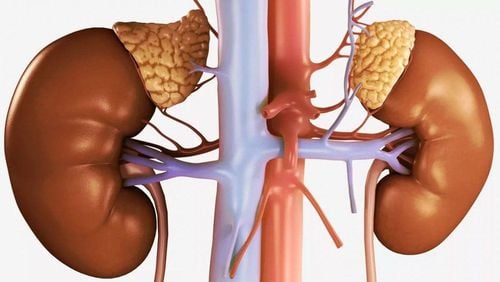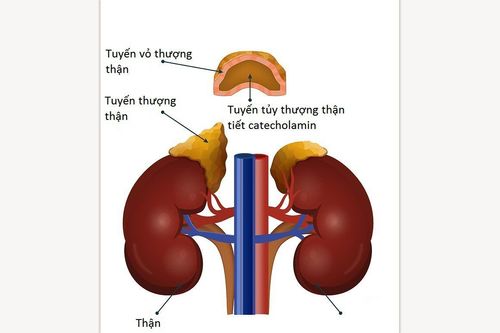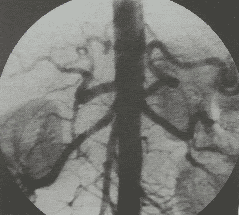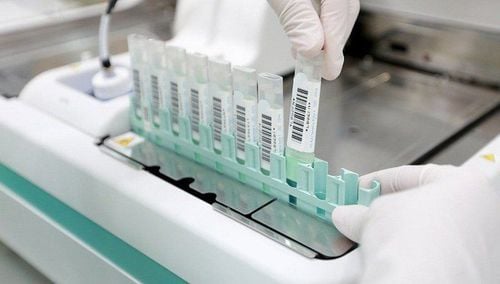This is an automatically translated article.
The adrenal medullary stimulation and suppression test is a tool to measure the kinetics of blood catecholamine levels. Thanks to this method, patients with adrenal myeloma are diagnosed early and treated appropriately from the outset. Thereby, the patient's blood pressure is controlled stably, limiting target organ damage as well as serious cardiovascular events later.1. What is adrenal myeloma?
Pheochromocytoma is a rare, usually non-malignant tumor that develops in the adrenal parenchyma. Usually, this type of tumor affects only one of the adrenal glands but can sometimes affect both and release hormones that cause persistent or high blood pressure. If left untreated, adrenal myeloma can lead to damage or serious, even life-threatening damage to other organs, especially the cardiovascular system.Most people with adrenal myeloma are at a very young age, from 20 to 50. Accordingly, the medical condition of the doctor is newly discovered and suspected high blood pressure, with idiopathic causes, along with symptoms. Symptoms such as profuse sweating, headache, rapid heartbeat, tremors, paleness, shortness of breath... This condition can occur spontaneously or can be triggered by factors such as exertion, anxiety. or stress, changing positions, or when the patient is about to undergo anesthesia and surgery. Certain drugs are also thought to stimulate adrenal myeloma, including monoamine oxidasec inhibitors, stimulants...
Because long-term high blood pressure can damage organs, especially the tissues of the cardiovascular system, brain and kidneys ; At the same time, surgical intervention to remove the tumor will bring blood pressure back to normal quickly, early diagnosis is extremely important. Because the hormones produced by adrenal myeloma require precipitating factors, clinicians have long designed the adrenal myeloma stimulation and suppression test to measure blood levels of catecholamines for diagnosis. this disease.
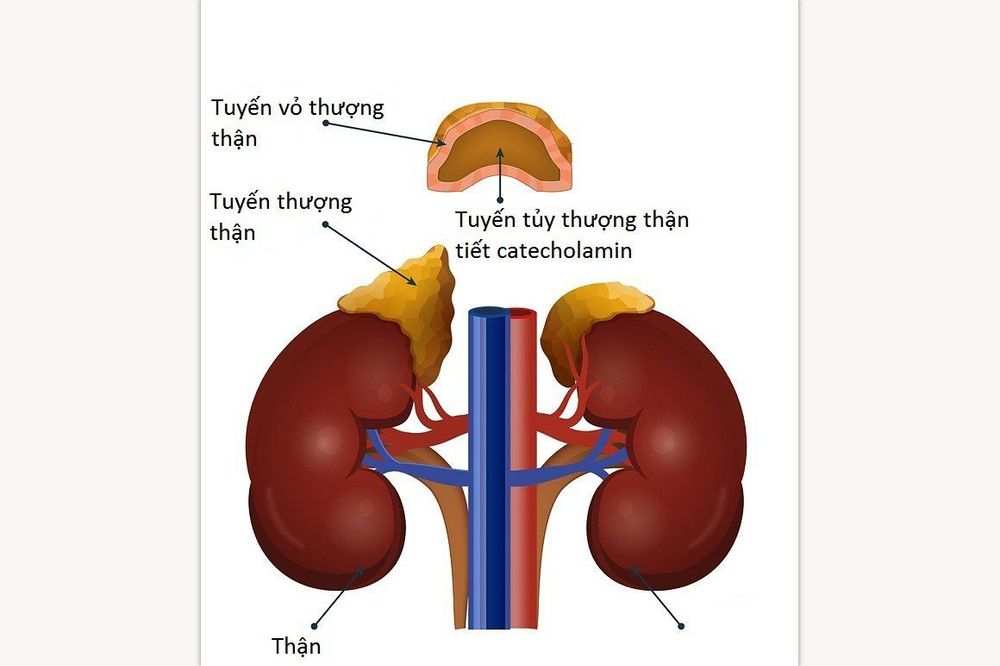
Bệnh u tuỷ thượng thận
2. What is a glucagon stimulation test?
The glucagon stimulation test is to create a sham situation to assess the response of the adrenal gland to the condition. If hormone levels are too high, you should suspect that you have adrenal myeloma.
To prepare for a glucagon stimulation test, you may need to stop estrogen therapy if you are a woman or exogenous steroid hormone supplements in general, including oral contraceptives, for several weeks prior to your test. as they may affect the results. Even if you are using steroid creams or inhalers, you may need to stop using these medicines for a short time. When you have an appointment for a glucagon stimulation test, you'll need to fast from midnight the night before the test, but you can still drink as much water as you need.
After your doctor explains the purpose of this test, you will be asked to lie down in bed in a quiet, comfortable environment for the duration of the test. What's more, there is a continuous electrocardiogram monitor to check your heart rate. The nurse or laboratory technician will place a catheter, which is a small tube used to collect a blood sample, into a vein in your arm. Blood samples will then be taken through this catheter to minimize pain for you.
A blood sample is first taken and then a hormone called glucagon is injected into the muscle in your buttocks. Glucagon is also a naturally occurring hormone in the body, responsible for raising blood sugar levels and stimulating insulin production. This will create a situation that puts your body under stress and will stimulate the production of hormones by the adrenal medulla. Follow-up blood samples after half an hour and three hours were also collected, respectively, to evaluate the kinetics of these hormone levels.

Xét nghiệm máu kích thích glucagon
3. What is the clonidine inhibition test?
The clonidine suppression test is also a test to confirm and exclude the diagnosis of adrenal myeloma. Subjects suspected of having this pathology were patients with refractory hypertension thought to be secondary to this and who had laboratory evidence that alterations in plasma catecholamine concentrations were outside the normal range.
Clonidine is a medicine used to treat high blood pressure. The drug's mechanism of action is to act on the brain to reduce sympathetic signaling, that is, to reduce the intensity of excitatory nerve signals to the adrenal medulla. Thereby, clonidine will inhibit the release of catecholamines and metanephrine from the adrenal medulla in normal people. Therefore, to test for clonidine inhibition accurately, patients need to stop taking drugs that can affect blood pressure for 1 to 5 days such as diuretics, tricyclic antidepressants, beta blockers. The patient also needed to relax in a quiet environment and had fasted overnight prior to this test, similar to the glucagon stimulation test.
First, the patient will have their blood pressure and heart rate measured three times and recorded in the data collection sheet. Then, a blood sample will be taken after 30 minutes of rest and just before clonidine is administered. Next, blood pressure and heart rate were continuously monitored every 1, 2, and 3 hours thereafter. Repeat blood samples were obtained 3 h after clonidine. Finally, blood samples must be transported to the laboratory as soon as possible after the last 3 hours of collection.

Người bệnh sẽ được đo huyết áp và nhịp tim trước khi thực hiện xét nghiệm
4. Evaluation of test for stimulation and inhibition of adrenal myeloma to diagnose adrenal myeloma
Tests for stimulation and inhibition of adrenal myeloma diagnose adrenal myeloma by two representative methods, glucagon stimulation test and clonidine inhibition test, which are quite common and simple to apply. The basic principle of these two methods is to create a false picture, either stimulating or suppressing the adrenal glands. In this context, the secretory response of the gland as measured by the blood catecholamine concentration helps confirm the diagnosis.
Specifically, when performing a glucagon stimulation test, the blood level of catecholamines will reflexively increase but only within a certain limit; If you exceed that limit, you need to think about the possibility of an overactive adrenal gland or an adrenal myeloma. In contrast, for the clonidine suppression test, in a normal person, the adrenal gland will be inhibited, so when measuring the blood catecholamine level will be very low while in patients with adrenal myeloma, it will be high.
However, in the process of analyzing to make the test that stimulates and inhibits adrenal myeloma, it is necessary to pay attention to the surrounding influencing factors. Since the principle of the two tests is generally to investigate the kinetics of blood catecholamine concentrations, it is difficult to avoid biases when results fall into the "false negative" or "false-positive" range. Accordingly, the factors that can have the most influence are the real health and psychological status of the patient when performing the test. In addition, the doctor also needs to pay attention to the medication the patient is taking or the habit of taking stimulant drugs, the procedure, the sampling operation... in order to make a highly reliable judgment.

Xét nghiệm cần được thực hiện tại cơ sở y tế uy tín
In summary, adrenal myeloma is a rare endocrine disease. However, with episodes of high blood pressure that are difficult to control, the patient's health is difficult to ensure if this disease is not detected early and treated appropriately. In order to do so, hypertensive patients, especially young people, need to visit the right specialist to be prescribed test for stimulation and suppression of adrenal myeloma to diagnose adrenal myeloma in the first place.
Patients with suspected symptoms of pheochromocytoma can go to Vinmec International General Hospital for examination, diagnosis and treatment. Vinmec brings together a team of well-trained endocrinologists with high technical qualifications and experience in the treatment of diseases related to the dysfunction of the endocrine system and hormones. Vinmec focuses on investing in a system of modern and advanced medical equipment with professional service quality, bringing high efficiency in diagnosis and treatment.
For detailed advice, please come directly to Vinmec Health system or book online HERE.
MORE:
The role of the hormone Glucagon in regulating the concentration of sugar (Glucose) in the blood Is adrenal myeloma dangerous? Adrenal tumors: Causes, symptoms, diagnosis and treatment





